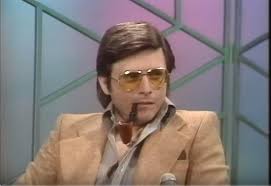There are many ways to write a novel or a short story. And most of those methods don’t work for most writers. In other words, writers are unique and will find their way to write their stories.
In the end, the method doesn’t much matter as long as the writer produces a good story.
Nevertheless, some writers struggle with how to write fiction. So, for what it’s worth, here is my method.
Before I begin, I want to give credit where it’s due. My writing method has been heavily influenced by Lester Dent’s Fiction Formula and James Scott Bell’s “Look in the Mirror” Moment.
Let me explain each of these influences.
Lester Dent’s Fiction Formula
Lester Dent was a pulp-fiction writer and the creator of Doc Savage. He once wrote that he’d never failed to sell a story that followed his fiction formula, which is pretty simple. In fact, it’s so simple it’s been ripped off by the unscrupulous and sold to wannabe writers for big bucks. Which is quite sad, as the formula is all over the internet for free.
Karen Woodward has an in-depth series on it on her blog.
The formula begins with the writer making four decisions:
-
- A different murder method for the villain to use
- A different thing for the villain to be seeking
- A different locale
- A menace which is to hang like a cloud over the hero
Now you don’t need all 4 different things. One is sufficient — but the more, the merrier, as they say. The point being to come up with something that hasn’t been done to death.
Just remember: make it different, but not too bizarre. Fiction has to be believable. Real life doesn’t.
Now divide your story into four quarters. Dent applied his formula to 6000 word short stories. However, I’ve found it works for any length of fiction.
In Part 1,
-
- You introduce all the characters
- The hero accepts the case, the challenge, whatever
- Near the end of part one, the hero gets into physical conflict
- Throw a twist into the story at the end
In Part 2,
-
- Pile more grief onto the hero
- Have the hero struggle
- Put in another physical conflict
- And another twist to the story
The menace should be growing like a fast-moving storm front.
In Part 3,
-
- Pile more grief onto the hero
- But now the hero begins to make progress towards solving the problem
- Have another physical conflict
- Add a surprise twist that makes things look bad for the hero
In Part 4,
-
- More grief is piled onto the hero
- Things are beginning to look impossible for the hero
- However, the hero by his own brains, skill, and brawn is able to get out of the difficulties
- The hero wraps up all the problems
- Try to have one final twist to the story
As you can see, the writer is to pile all kinds of trouble onto the hero and in the end the hero solves all the problems by himself.
James Scott Bell’s “Look in the Mirror” Moment
Bell made a study of movies and novels. What he found was that in the middle of the story there was a moment that pulled together the entire tale. He calls that moment the “Look in the Mirror” moment.
It is the point in the story where the main character, our hero, looks at himself and asks what kind of a person he is (character-driven story) or can he turn the odds to his favor and overcome the seemingly overwhelming odds against him (plot-driven story)?
Of course, both aspects may be involved. The point, though, is that the character — at the midpoint — is so low he needs to have a come-to-Jesus meeting with himself in order to go on.
Putting Them Together
Dent and Bell have been influential in how I approach writing a story. They’ve taken the “mystery” out of putting a story together.
I start with Dent’s Formula. It is my working guide. Now, being a pantser, I write very little if anything down. Like H. Bedford-Jones, the King of the Pulps, I just start writing. But in the back of my mind is Dent’s Formula.
Between Acts II and III of the four act drama, I put the Look In The Mirror Moment.
I beat up the main character in Acts I and II, slowly bring him back in Act III, with the final battle and triumph taking place in Act IV.
Following Dent and Bell has made my writing life easy-peasy.
And perhaps they’ll simplify storytelling for you, too. And I didn’t charge you one red cent for this advice. 🙂
Comments are always welcome! And until next time, happy reading and writing!
Share This!
